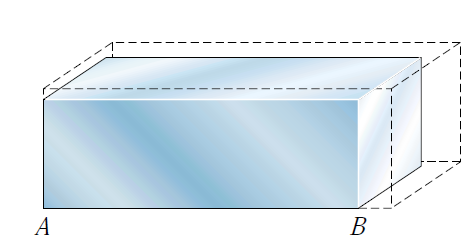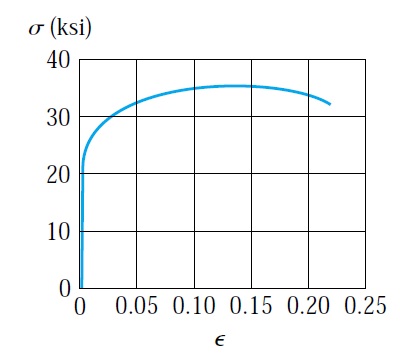Thermal effects in a structure
stresses on structures are not generated only due to external loads, change in temperature will result in thermal stress and thermal strain due to contraction and expanding of structures, figure 1 showing a block, if we increase the temperature of the block and fixed the block at point A, as a result of heating the block will expand and the shape will be approximately similar to dashed lines,
Figure 1
For most materials, the thermal strain is proportional to change in temperature and can be computed using the following equation
εT=ΔT*α
where α is the coefficient of thermal expansion, the unit for the coefficient of thermal expansion is (1/K or 1/C), ΔT is the change in temperature for the structure. The strain assumed to positive for expansion and negative for contraction, the table below shows the coefficient of thermal expansion for some materials.
Table 1
ordinary structural materials expand when heated and contract when cooled, the thermal strain is reversible, that's mean when the material cooled to original temperature, the structure will restore the original shape. few materials behave differently, when they heated above a certain temperature, the material contract, and the opposite will happen when cooled.
water also behave in a different way, water will expand when the temperature is above 4 c and below 4c.
if the material of a prismatic member is homogenous and isotropic, the change in the member dimension due to thermal effects can be calculated using the following equation
δT=L*ΔT*α
Figure 2
internal stress will not develop if the member under the thermal effects is free to deform, but if the member is constrained, thermal stresses will be developed, for the member in figure 2 no internal stresses will be developed because it is free to expand at one end.



















Comments
Post a Comment